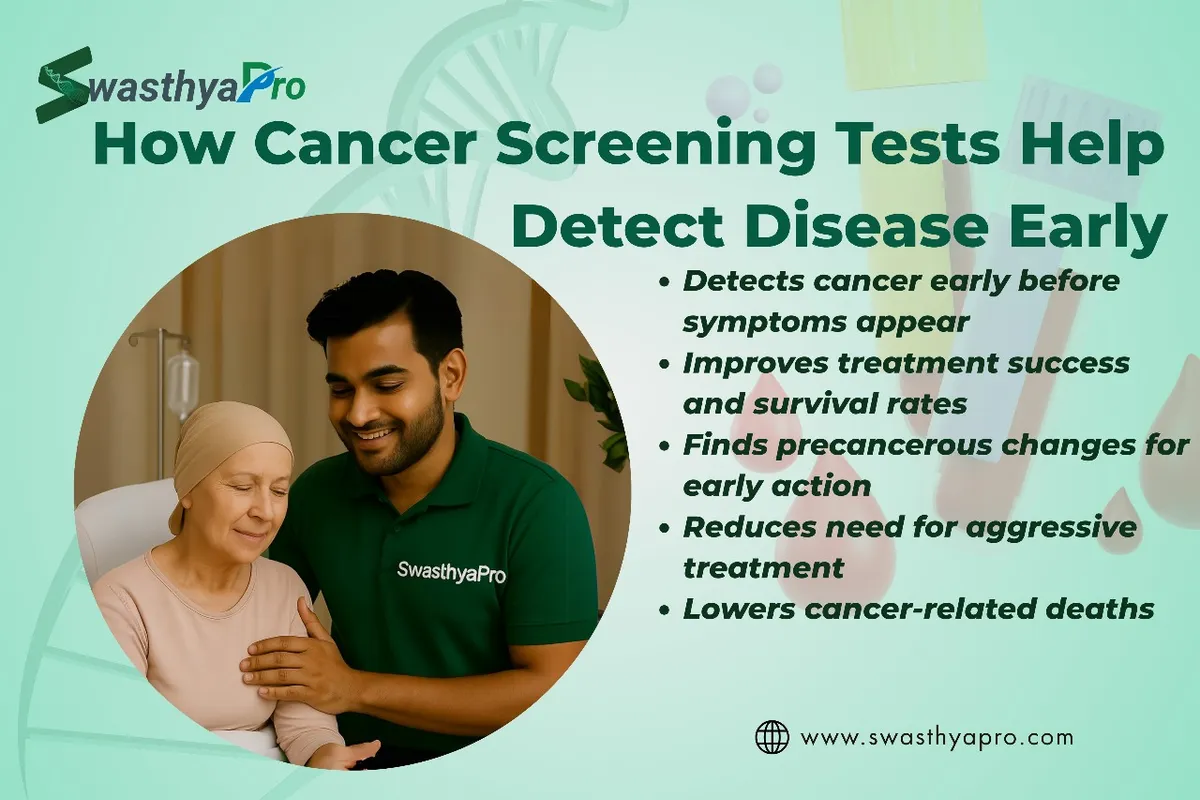Cancer screening test for men: prostate, colon, and lung screenings to consider

Most men don’t think about cancer until it’s too late. They’re less likely to visit doctors regularly and more likely to ignore warning signs. That’s why scheduling a cancer screening test is one of the smartest moves a man can make — especially after 40.
This guide explains the top three cancer screening test types that every man should be aware of: prostate, colon, and lung. Each of these cancers affects thousands of men every year, but early detection through proper screening can save lives.
Prostate cancer screening: The PSA blood test
Prostate cancer is one of the most common cancers in men, especially over the age of 50. It often develops slowly and without obvious symptoms. That’s why a simple cancer screening test like the PSA (Prostate-Specific Antigen) blood test is so important.
What is a PSA test?
It measures the level of PSA in your blood. Higher levels can indicate prostate inflammation, enlargement, or cancer.
When should men get it?
Most men should begin screening around age 50, or earlier (around 45) if there's a family history of prostate cancer. A yearly or bi-annual PSA test is generally recommended as a safe and effective cancer screening test.
It’s a quick blood test — no pain, no prep — and can alert your doctor to issues long before symptoms appear.
Colon cancer screening: Catch it before it spreads
Colon or colorectal cancer is highly treatable when caught early. But it often goes unnoticed until it's more advanced. That’s where regular cancer screening tests make all the difference.
What are the common tests?
- Colonoscopy: A camera looks inside the colon and rectum.
- Stool tests (FIT, gFOBT): Look for hidden blood in stool samples.
- CT colonography: A less-invasive scan to view the colon.
When to get screened?
Men should start colon cancer screening around age 45, or earlier if there’s a family history. A colonoscopy every 10 years is standard, but stool-based tests can be done more frequently.
These cancer screening tests not only detect cancer but can also remove pre-cancerous polyps during the process — preventing cancer before it starts.
Lung cancer screening: Especially for smokers
Lung cancer has one of the lowest survival rates — not because it’s untreatable, but because it’s often found too late. That’s why men who smoke or used to smoke should seriously consider a cancer screening test for the lungs.
What’s the test?
A Low-Dose CT (LDCT) Scan is the recommended cancer screening test for lung cancer. It takes a detailed scan of your chest to detect small nodules or growths that a normal X-ray might miss.
Who needs it?
Men aged 50–80 with a heavy smoking history — especially current smokers or those who quit in the past 15 years.
The scan is painless, fast, and has the potential to catch cancer before it spreads.
Why men avoid cancer screening test — and why that needs to change
Many men avoid cancer screening tests because they fear the results, feel embarrassed, or believe they’re “fine.” But not having symptoms doesn’t mean you’re in the clear. Most early-stage cancers don’t cause pain or noticeable signs.
Skipping a cancer screening test is like ignoring your car’s service light — it doesn’t mean the engine is okay. It just means you’re not checking.
Taking charge of your health is not weakness — it’s maturity. It’s responsibility. And it’s strength.
Final thoughts
If you're a man over 40, a cancer screening test should be on your yearly checklist. Whether it’s a PSA test, a colonoscopy, or a lung scan, these tests can detect problems before they turn serious.
Talk to your doctor, understand your risk factors, and schedule the right cancer screening test based on your age and lifestyle. Prevention is not just cheaper than cure — it’s smarter.
Make time for your health now. Because waiting until symptoms show up may be too late.